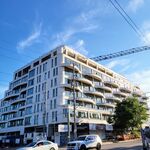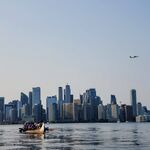Jdot
Active Member
If only our powerstations were as nice as Battersea Power Station.
Did you notice? It seems Blue22 is still alive!
It's like they took every plan every city had and said election time, you can have your money!
This really is an incredibly exciting announcement. Despite the projects that I think are a bit questionable, I still think there are so many little things in there that we haven’t heard anything about before now. I’m really intrigued by the LRT from Kipling to Hurontario and the Hamilton lines. They seem to be jumping all the phases for the VIVA and Acceleride projects and going right to LRT on Hurontario and even subway on Yonge. While the Yonge Subway will likely add to overcrowding problems on that line, it will certainly be quite well-used since the corridor even through York Region is very well-developed. The GO improvements are all outstanding and long overdue. I’m really quite surprised about the electrification. This really is a signal that the government is looking to turn GO into a real rapid transit service, at least on the Lakeshore. I’m even more surprised about the crosstown route. I hope that they operate it at a frequency that makes it genuine rapid transit. Even if they don’t in the short term, it’s a good way to provide relief to Union and make GO more attractive to people who work closer to Bloor. It will only be successful with GO/TTC fare integration, though. Incidentally, with all this money being spent, why don’t they introduce a smart card for the TTC? The province seems to be doing exactly to the letter what the City has asked for. I just wish that the City asked for something a little better.
I'm hoping beyond all hope that somehow someone somewhere will realize that it's ridiculous to put a streetcar on Sheppard rather than finishing the subway. I just hope that some study or perhaps the province or local groups will ask for the subway. Once you've built a complex underground interchange at Don Mills and rebuilt Sheppard, it's not going to cost that much less than a subway.
It just goes to show that York Region demands subways and gets subways, while Mississauga and Toronto demand streetcars and get streetcars.
That's only the smart card, which only has "fare integration" as far as you can pay all the separate fares on one integrated card.
Full fare integration is what you find say in London - where your Travelcard is good for all buses, underground, local rail within the specified zones, despite them being different operators. Partial fare integration is what you find with GO and the suburban bus systems, where a $0.50 fare gets you a discount on the local buses with a valid GO ticket.
Fare integration (at least partial) is necessary to make a crosstown line useful, and full fare integration will be needed to get students onto the Sorbara Subway from Steeles, Highway 407 or 7 that are currently taking their GO or YRT bus directly into York U.




